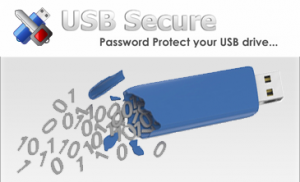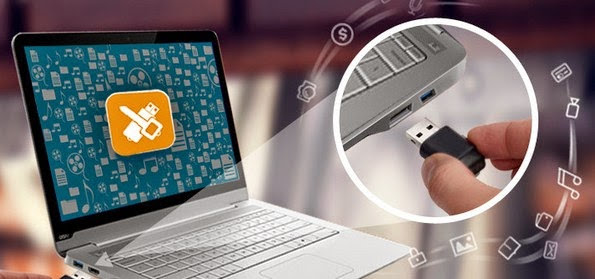
USB flash drives are also known as thumb drive due to its small size. A USB flash drive can have a capacity up to a terabyte. A USB flash drive that has a storage capacity of 1GB can save data more than Six Hundred floppies. The price of a USB thumb drive is reasonably low. A USB has a storage capacity up to 16GB costs only $15 to $17. Due to its portability and affordability, it is extremely feasible to carry the data. Where its small size is advantageous to carry data, there is also a disadvantage of such tiny size that USB drive requires extraordinary care. Data acts as genetic material for a company. A delicate piece of information can reveal past organization planning as well as the upcoming steps of the organization.
USB flash drive can easily be lost or stolen. A USB can save a huge amount of data, if the USB is lost, it can be used as a weapon against the company. The rival companies can plan their steps accordingly and can use their client’s data for their own good. A company should focus on the security of their data. According to a research, data breach through USB drives are not a result of carelessness, but, due to the lack of security measures by the company. The company needs to track all the records of the USBs used by the company and the USBs plugged into the organization’s computers.The data breaches are not always a result of lost or stolen USB. Sometimes ex- employees steal data and present to their new employers. New employers can reward those employees who steal the competitor data. Even the employees of the company who are not at a respectable post in an organization can be bribed to breach data. Organizations need to restrict the irrelevant employees from accessing the confidential information about the business. To protect USB drives, organization may opt for the password protection. As a USB drive as a whole cannot be password protected–many of the important files are usually in MS Office format. MS Office applications offer a built-in password protection facility. It is necessary to use complex and uncommon passwords that cannot be guessed easily. Try to create password from the letters that are not closely located on the keyboard. Use uppercase, lowercase, numbers and symbols for the password. The important and the less important documents should be stored separately.
Using encrypted software can provide a backup of the data. But encrypting data is not the perfect solution, because the data needs to be accessed from anywhere. Internet access is necessary to access encrypted data. There can be some situation where one cannot access internet. The traditional techniques to secure data do not offer cent percent security for the data. If a company gets willing to spend a small of money for the security of their data in portable storing drives, there is some reliable software in the market such as; USB Secure. USB secure offers foolproof security.
Ways To Make USB Secure

1. Use encryption software: There are many encryption software programs available that can be used to secure data on a USB drive. Examples include BitLocker, TrueCrypt, and DiskCryptor. These programs allow you to encrypt the data on the USB drive, making it inaccessible to anyone without the correct password.
2. Use a password: You can also use a password to protect the data on your USB drive. Make sure the password is strong and unique.
Check USB For Viruses
1. Install antivirus software: Install an antivirus software program on your computer to scan your USB drive for any viruses. Make sure to keep the software up to date so it can detect the latest threats.
2. Scan your USB drive: After installing the antivirus software, scan your USB drive for any viruses. The antivirus software will detect any malicious files and alert you.
3. Delete any suspicious files: If the antivirus software detects any suspicious files,
Can A Hacker Hack A USB?
Yes, it is possible for a hacker to hack a USB. Hackers can use malicious software to gain access to a USB and potentially gain access to any data stored on the device. To protect yourself from USB hacks, it is important to keep your USB secure by using strong passwords, encrypting data, and regularly scanning for viruses and malware.
Can A Virus Enter A USB?
Yes, it is possible for a virus to enter a USB. Viruses can be transferred to a USB device through malicious software, email attachments, or by simply plugging the USB into an infected computer. To prevent viruses from entering your USB, it is important to use an antivirus software to scan for suspicious files and alert you. Additionally, you should regularly scan for viruses and malware, and delete any suspicious files that are detected.
Lock My USB Port
There are a few different ways to lock your USB port. The most secure way is to use a physical lock, such as a combination lock or a key lock. This will prevent someone from physically plugging in a USB device without permission.
You can also use software to lock your USB port. This is done by setting up a password or using encryption. This will prevent anyone from accessing your USB port without the correct password or encryption key.
Disable USB Blocking
To disable USB blocking, you will need to access the settings of your computer or device. Depending on the operating system, this can be done differently. For Windows, go to the Control Panel and select Device Manager. Find the USB port you want to disable and right-click on it. Select Disable Device and confirm the action.
For Mac, open System Preferences and select Security & Privacy. Find the USB port you want to disable and select the lock icon. Select Disable and confirm the action.
Reason For Usb Become Write-Protected
There are several possible reasons why your USB has become write-protected. It could be due to a virus or malware, a hardware incompatibility, or a configuration setting. To resolve the issue, you’ll need to check the settings of the USB device, check for any viruses or malware, and check the compatibility of the USB device with your computer. If the issue persists, you may need to contact the manufacturer of the device for further assistance.
Clear A USB That Is Write Protected
In order to clear a USB that is write protected, you will need to access the device’s settings and disable the write protection feature. Depending on the device, you may need to use a third-party software to access the settings. If you are unable to remove the write protection, you may need to contact the manufacturer of the device for further assistance.
Check The Health Of My USB Ports
You can check the health of your USB ports by using a USB port tester. These testers will usually be able to tell you if the port is working properly and if there are any issues with it. Additionally, you can also check the power draw of the port to ensure that it is not drawing too much power.
Device That Cannot Be Hacked
Unfortunately, no device is completely hack-proof. Every device is vulnerable to malicious attacks and can be hacked if the hacker has the right tools and knowledge. The best way to protect yourself from hackers is to keep your devices up-to-date with the latest security patches and use strong passwords.
Signs Of A Hacked Device
The signs of a hacked device vary depending on the type of device and the type of attack, but some common signs include:- Unusual or suspicious activity on the device
– Unfamiliar programs or apps running in the background
– Unusual or suspicious messages or emails
– Unrecognized or suspicious files on the device
– Unexpected changes to settings or preferences
– Unusual or suspicious network activity
– Unusual or suspicious pop-ups or browser redirects.
Data Hackers Hack The Most
Hackers most commonly hack into websites and networks, as well as mobile devices. They often try to gain access to sensitive data such as financial information, passwords, and personal information. Hackers may also use malware to gain access to a system or infect a device with malicious code.
Way To Check If USB Is Corrupted
You can check if your USB is corrupted by running a virus scan on it. You can also use a program such as Disk Utility to check the integrity of the USB drive. Additionally, you can check the USB drive in your computer’s Device Manager to make sure that it is not malfunctioning.
The Risk Of USB
The risk of using USB devices is that they can be used to transfer malicious code or malware to your computer. USB devices can also be used to access confidential data, such as passwords and financial information. Additionally, USB devices can be used to install malicious software on your computer without your knowledge.
Side Effects Of Faulty USB
Faulty USB drive can damage a computer. If the USB drive is malfunctioning, it can cause errors in the computer’s operating system or corrupt data stored on the drive. Additionally, a faulty USB drive can damage the port it is connected to, as well as the computer’s motherboard.
Way To Uncorrupt A USB Port
The best way to uncorrupt a USB port is to disconnect the USB device and then reconnect it. If the issue persists, try uninstalling and reinstalling the USB drivers. If the issue continues, you may need to replace the USB port.
Powered by NewSoftwares.net
